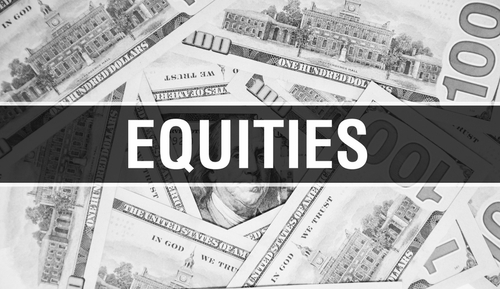

Summary
- Equities have been selling off this year amid high inflation and rising rates, but the S&P 500 bounced 6.45% last week.
- One reason may be quarterly rebalancing flows.
- Large real-money investors often target particular asset ratios (e.g., bonds/equities). Large differences in relative asset performance may necessitate a rebalancing.
Market Implications
- Such rebalancing should mean relative gains for underperforming assets into the end of periods – in this case, equities.
This article is only available to Macro Hive subscribers. Sign-up to receive world-class macro analysis with a daily curated newsletter, podcast, original content from award-winning researchers, cross market strategy, equity insights, trade ideas, crypto flow frameworks, academic paper summaries, explanation and analysis of market-moving events, community investor chat room, and more.
Summary
- Equities have been selling off this year amid high inflation and rising rates, but the S&P 500 bounced 6.45% last week.
- One reason may be quarterly rebalancing flows.
- Large real-money investors often target particular asset ratios (e.g., bonds/equities). Large differences in relative asset performance may necessitate a rebalancing.
Market Implications
- Such rebalancing should mean relative gains for underperforming assets into the end of periods – in this case, equities.
The Dead Cat Bounce
2022 has been an abysmal year for risk markets. Amid rampant inflation and rising rates, assets such as equities and crypto have fallen from historic highs. We are in a bear market, and it is one that will probably extend amid deepening negative sentiment. Yet last week, the S&P 500 turned heads when it rose 6.45%. Friday alone saw a 3pp jump.
So what was behind the bounce? Do investors think a market bottom is near? Are inflation concerns abating? A more mundane, but perhaps more accurate, explanation may be that it was due to end-of-quarter portfolio rebalancing by large real-money investors such as pension funds, fund of fund managers and sovereign wealth funds.
Rebalancing in Theory
The ‘60/40’ strategy is a well-documented cliché in finance. The idea is that large real-money investors allocate roughly 60% of a portfolio to equities and 40% to fixed income. In the US, that has not been true for some time. But such investors still certainly target certain proportions, with many pension funds explicitly stating these proportions along with their deviation limits.
This means that when asset classes see large, divergent market moves, it can drive a need to rebalance. Chart 1 illustrates this very simply. Here, a fund targets a 60:40 equity:bond mix. Over period T1, if equities gain 10% and bonds lose 10%, the fund would need to buy 4.8 units of bonds and sell 4.8 units of equities to maintain the target mix.
In this example, this rebalancing flow would boost bond demand and equity supply in the market. All else equal, this would support bond prices and suppress equity prices.

What Happened in Q2 2022?
The real world is more complicated due to FX translation effects, allocations to other asset, tolerance bands, and pre-emptive rebalancing. Indications of rebalancing have historically been modest but have been more significant where the moves are large. Since the start of Q2, asset performance has been poor for both equities and fixed income, with US stocks, EGBs, Gilts and European equities performing the worst (Chart 2).

According to theory, the relative equity/bond performance within geographies should be most important. There, we see that performance varies most in the US, with the S&P 500 significantly underperforming US Treasuries.
When Does Rebalancing Happen?
The period of rebalancing varies across firms and countries. We can attempt to approximate it by taking the point at which the correlation between the QTD and the rest-of-quarter (RoQ) performance is most negative (Chart 3).
We find that, for the US, Eurozone and UK, the correlations are most negative eight days before quarter end. Meanwhile, for Japan, the trough is around 10 days before quarter end, with a sharp spike a few days later.

Was Rebalancing Behind the Bounce?
The timing for the US rebalancing aligns with the recent spike in equities, implying that rebalancing was a factor. But the size of the mismatch between equity and bond performance is important, too. Larger performance differentials are more likely to trigger reversals of performance into the end of the month.
QTD, we find that only the US bond/equity relative performance stands above astandard deviation from typical quarterly relative performance (Chart 4). There, a 12pp underperformance of equities vs bonds QTD suggests a 2.5% outperformance in S&P vs treasuries into quarter end.

The Bottom Line
Our research suggests quarterly rebalancing contributed towards the recent bounce in equities. Should a similar situation occur at the end of the third quarter, investors would do well to consider portfolio rebalancing as a factor instead of reading too much into other, more story-driven narratives. We remain bearish on equities overall.
Henry Occleston is a Strategist, who focuses on European markets. Formerly, he worked in European credit and rates strategy at Mizuho Bank, and market strategy at Lloyds Bank.
(The commentary contained in the above article does not constitute an offer or a solicitation, or a recommendation to implement or liquidate an investment or to carry out any other transaction. It should not be used as a basis for any investment decision or other decision. Any investment decision should be based on appropriate professional advice specific to your needs.)
